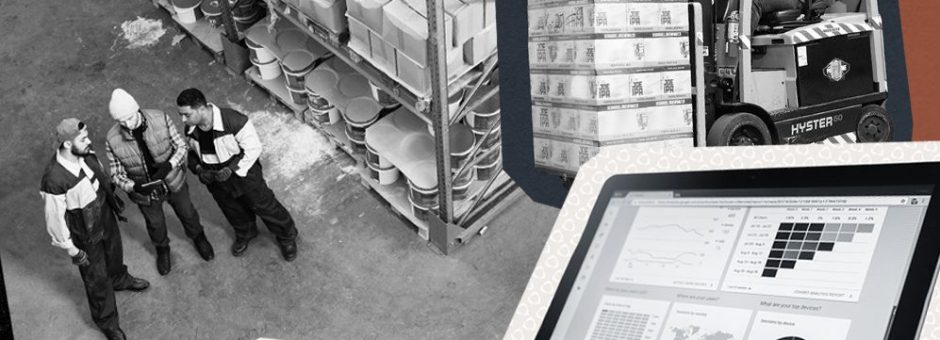COVID-19 has exposed supply chain vulnerabilities while simultaneously changing not only the way people shop, but the products that society demands. As a result, manufacturers are updating their approach to both inventory and manufacturing processes. In many cases the so-called ‘black swan event’ has prompted action on long considered measures. The changes, technological, procedural and philosophical, are likely to extend, at least in part, beyond the COVID crisis.
Just in Time or Just in Case Inventory?
With regard to supply chain management, the name of the game in recent decades has been value optimization with companies going to great lengths to secure the greatest deals on inputs and all other factors taking a back seat. The popular ‘Just in Time’ model stresses flexibility and rewards quick and nimble delivery timeframes.
The COVID-19 shutdown disrupted both manufacturing and transportation capabilities, leaving many manufacturers without a valid source for key inputs upstream, while also complicating downstream deliveries. While the vulnerabilities of the Just in Time model have been discussed in the past, the current conundrum has brought the topic to the forefront. Shoring up the supply chain has become the new focus, with increased emphasis on shorter chains that feature suppliers who are both secure and flexible. Double sourcing has been another practice to gain favour, as horror stories of companies being burned by putting all their eggs in one basket abound.
“Companies that can stabilise their supply chains and position themselves to assess future disruption by providing structured responses to their risk and exposure will be in a position to withstand the current supply chain disruption,” explains Harsha Razdan of KPMG India. “Those organisations that manage their supply chain and demand issues reactively will not be very successful over a longer period. In this environment, it is those with the most agile, efficient and resilient supply chains that will survive and win in the market.”1
In addition to stabilising the links in their supply chain, many disciples of the low inventory model are warming to the idea of keeping larger stocks of vital goods on hand. The loss of flexibility may be necessary in order to reduce risk in the event of future supply chain disruptions.
Flexibility in Manufacturing and Supply Chain
The impending reshuffling of the supply chain deck, coupled with the speed at which consumer demands and societal needs are shifting, has resulted in a premium being placed on speed and flexibility in the manufacturing process. Remaining nimble on the shop floor, yet secure in the supply chain, is a matter of implementing technology and leveraging data at all levels of the operation.
Enterprise Resource Planning
With so many variables at play, a properly implemented ERP system is essential to managing a flexible manufacturing operation. A good ERP system will allow for the collection of unprecedented volumes of relevant data, but it’s the proper utilization of this data that provides true value. To this end, Key Performance Indicators (KPIs) are a difference maker.
“Most KPI and dashboard solutions come with certain KPIs—sales, margins, labour performance, quality, scrap, etc.—built in,” writes Mike Melzer for Quality Magazine. “The best solutions also allow for some customization so you can format the data the way you need to see it. When you understand the performance metrics that matter to your business and have that data instantly at your fingertips (instead of spending valuable time digging for it) you’ll make better decisions faster and with more confidence.”2
Among the utilities of a good ERP/KPI system are identification of industry trends, business health and customer needs, resulting in better decisions throughout the operation.2
The Flexible Manufacturing Facility
Hallmarks of the agile manufacturing operation include an automated facility, the increased use of mobile tracking technology and the proper utilization of 3D printing. To these ends the 5G network will be a major factor.
“With 5G helping to usher in a Fourth Industrial Revolution, the benefits of a next-generation network are anticipated to register strongly on the factory floor. Just as the refinement of mechanical processes led eventually to the assembly line, the combination of 5G and manufacturing has the potential to bring about another radical breakthrough.”3
As 5G enables the expansion of the Industrial Internet of Things, human workers will potentially interact with digital systems at an increased level, increasing safety, efficiency and supply chain tracking in the process.
Permanent Implications of COVID-19 on Manufacturing.
COVID-19 has altered most aspects of life not only for industry, but for individuals. Many of the changes that have been made seem temporary, as people look forward to a return to ‘normalcy’ after a potential vaccine is found. What seems apparent, however, is that certain of the updated processes that are currently impacting our day to day lives will remain in place on an ongoing basis, even if at a reduced rate. Thus, while it may seem premature to declare a total and permanent overhaul of supply chain management and the manufacturing process, the forward-looking executive understands that staying current and planning for the future is always paramount to success.
Cited Sources
1 Bora, Garima. “Covid-19 Has Upended a Key Management Principle-or Has It?” The Economic Times. Economic Times, June 20, 2020. https://economictimes.indiatimes.com/small-biz/sme-sector/covid-19-has-upended-a-key-management-principle-just-in-time-jit-inventory/articleshow/76477328.cms
2 Melzer, Mike. “Three Manufacturing Trends That Meet the Need for Speed.” Quality Magazine RSS. Quality Magazine, May 28, 2020. https://www.qualitymag.com/articles/96089-three-manufacturing-trends-that-meet-the-need-for-speed
3 Specified, Not. “5G And the Impact on Manufacturing.” About Verizon, June 24, 2020. https://www.verizon.com/about/news/impact-on-manufacturing.


1 thought on “Manufacturing the Future”
Comments are closed.